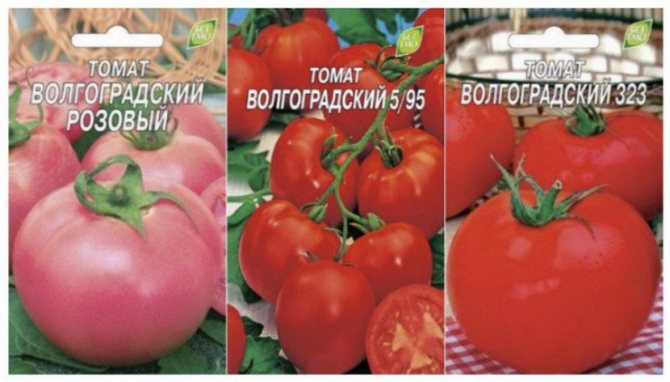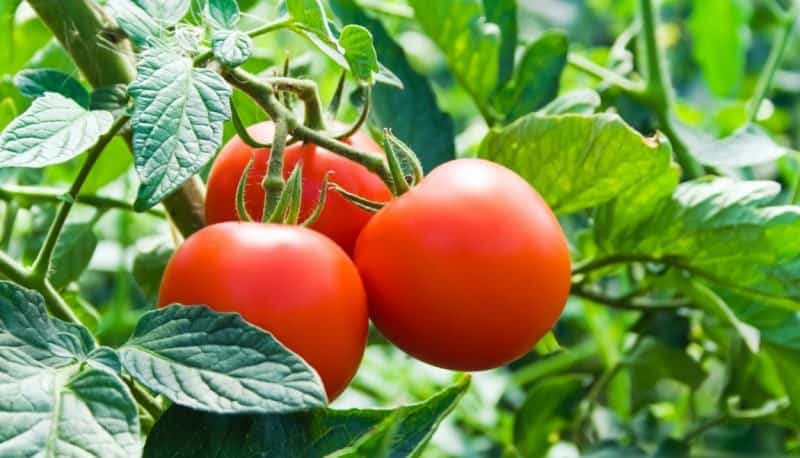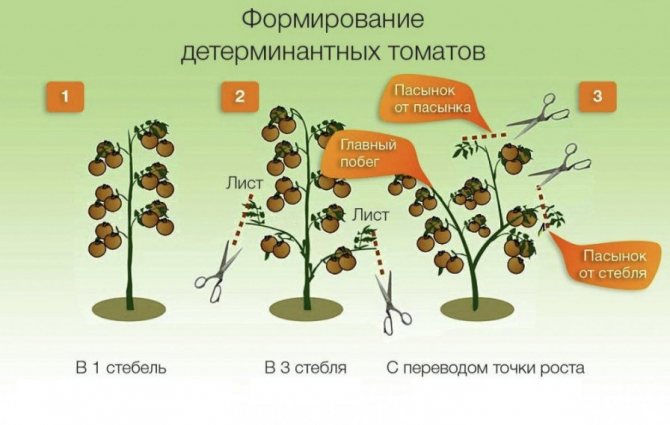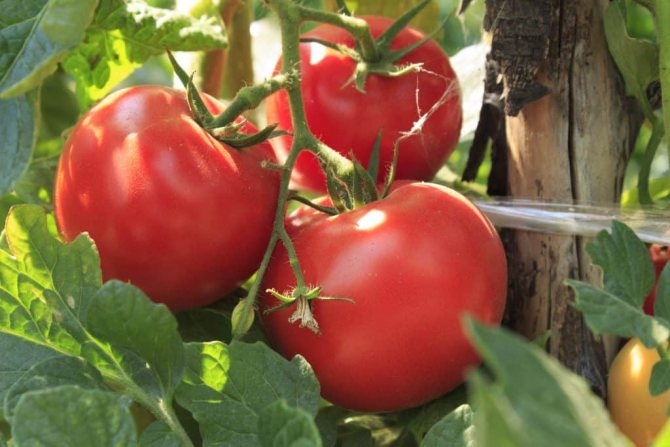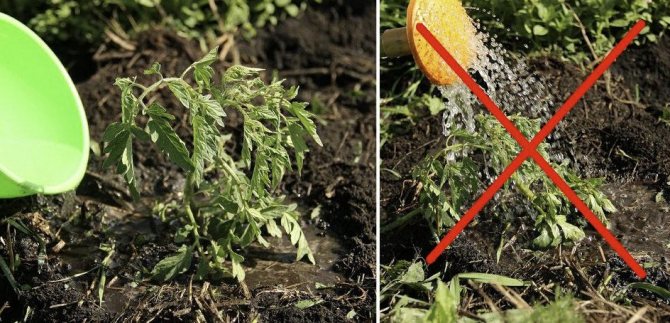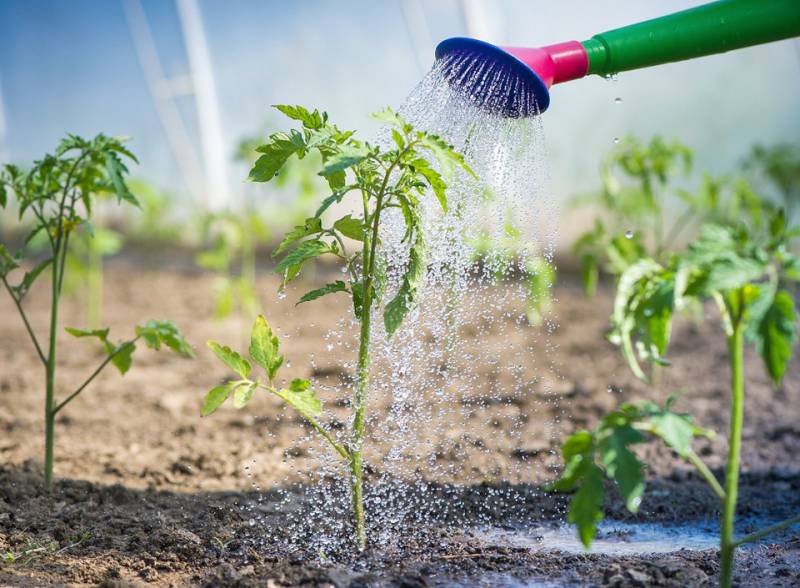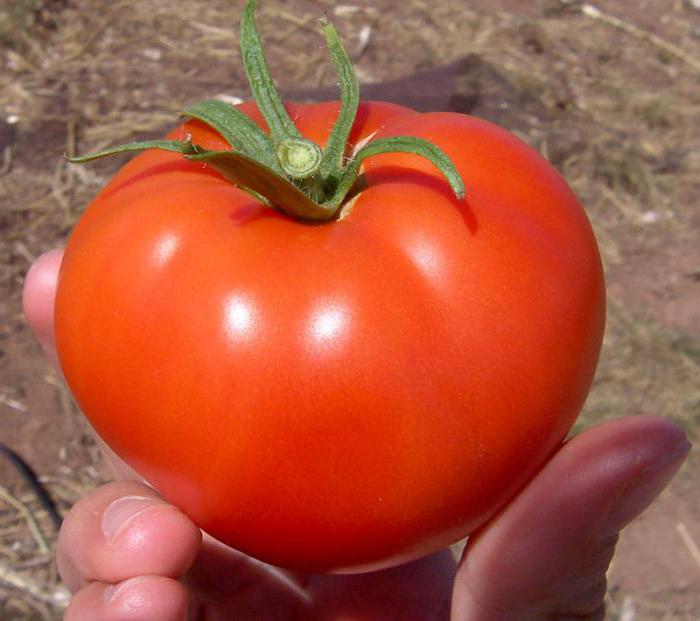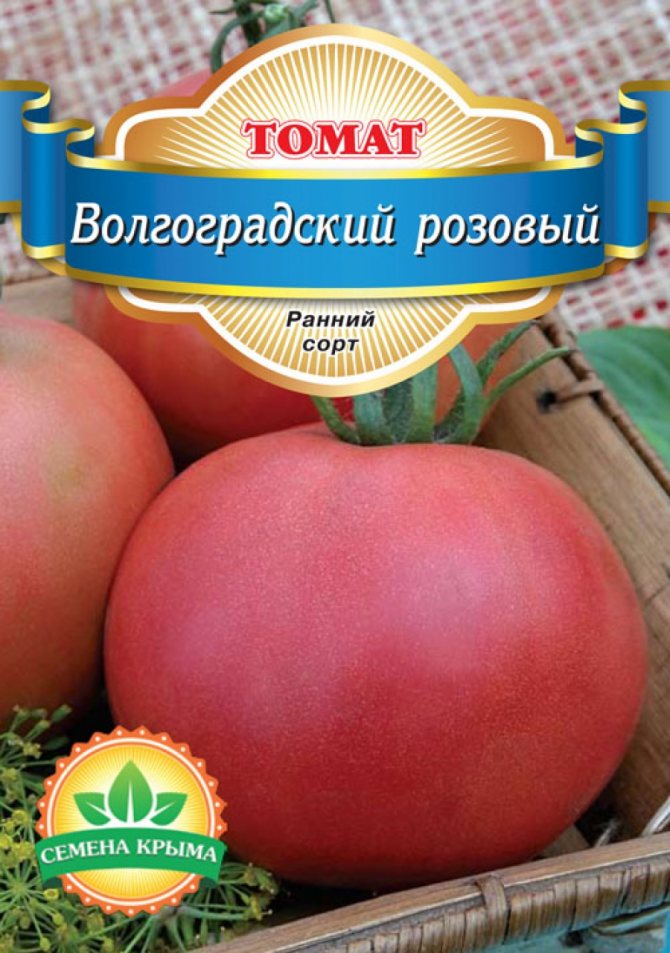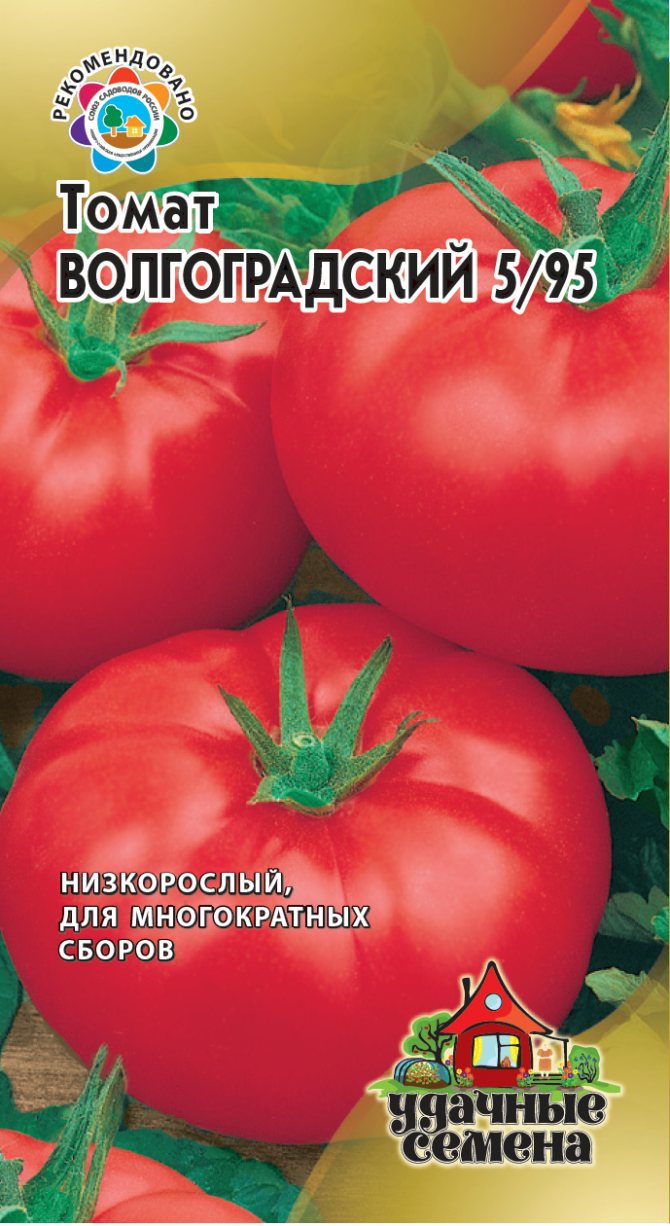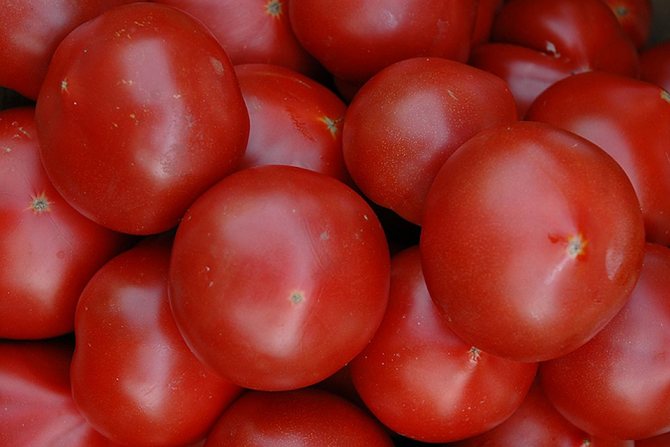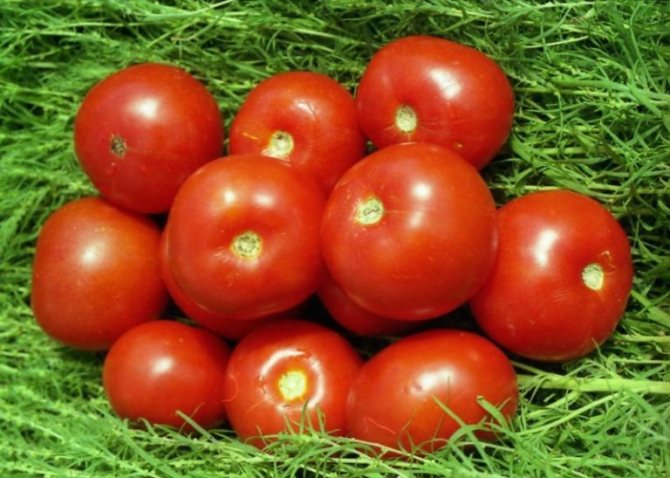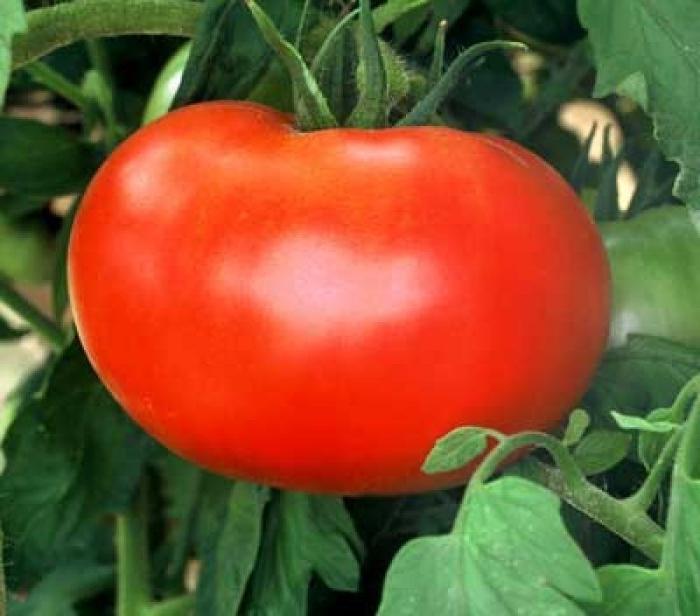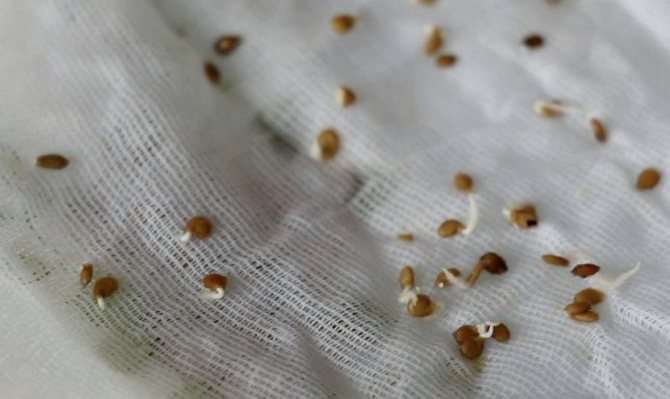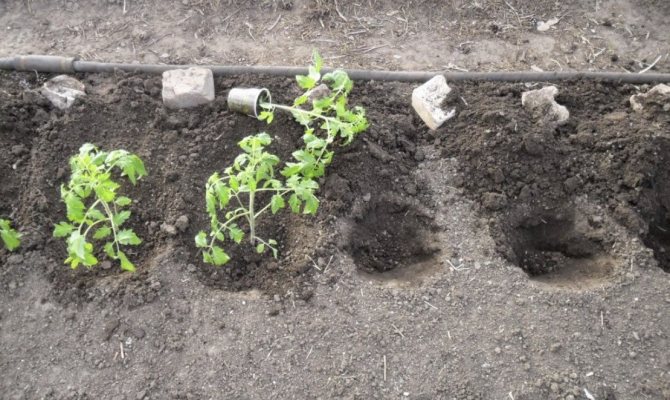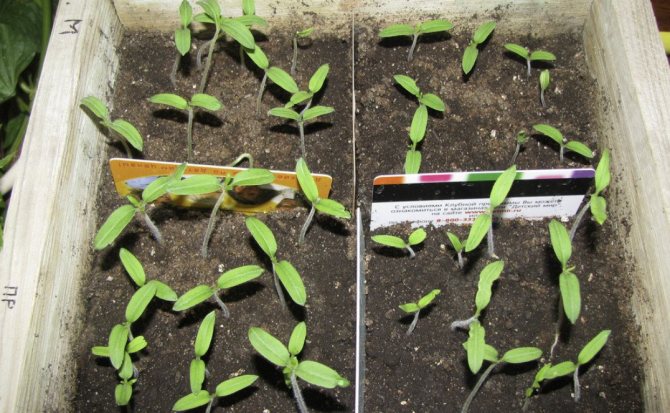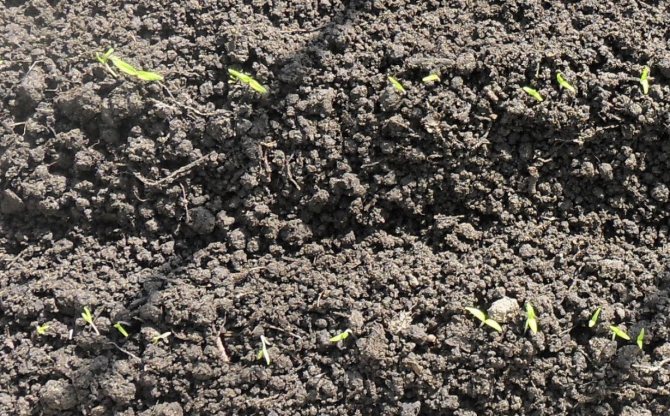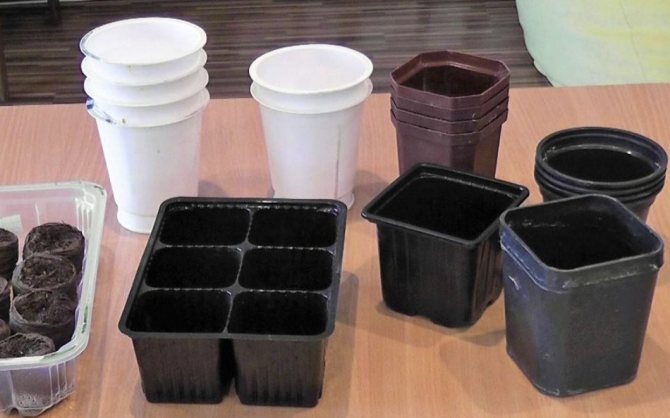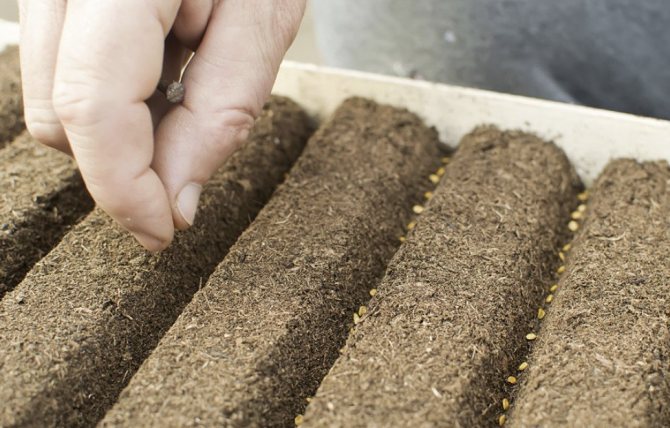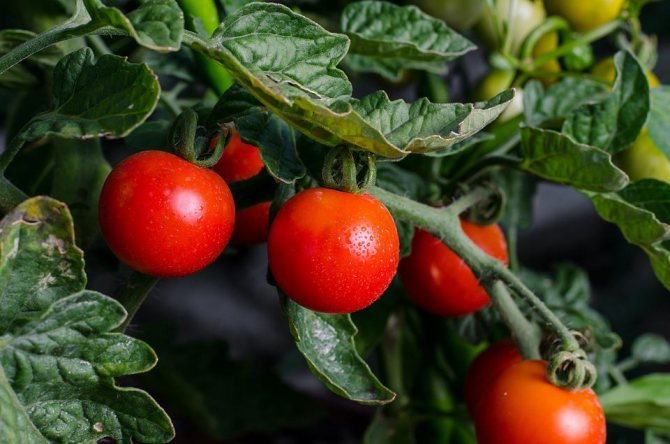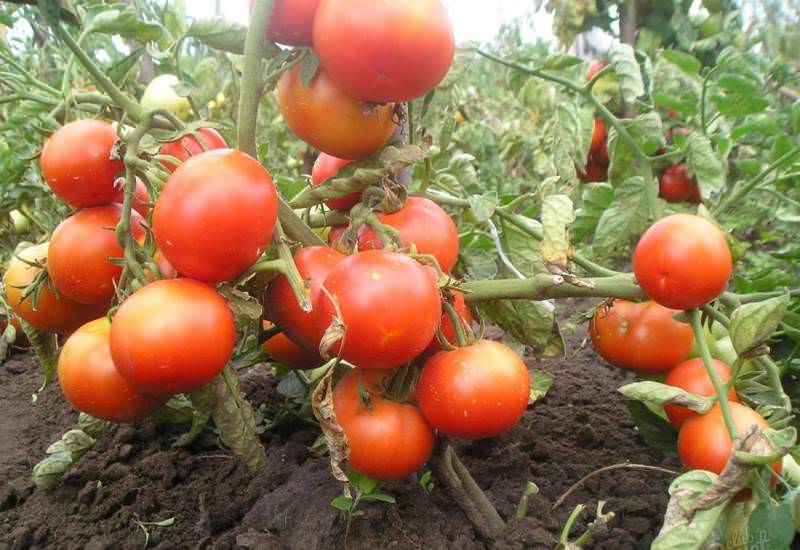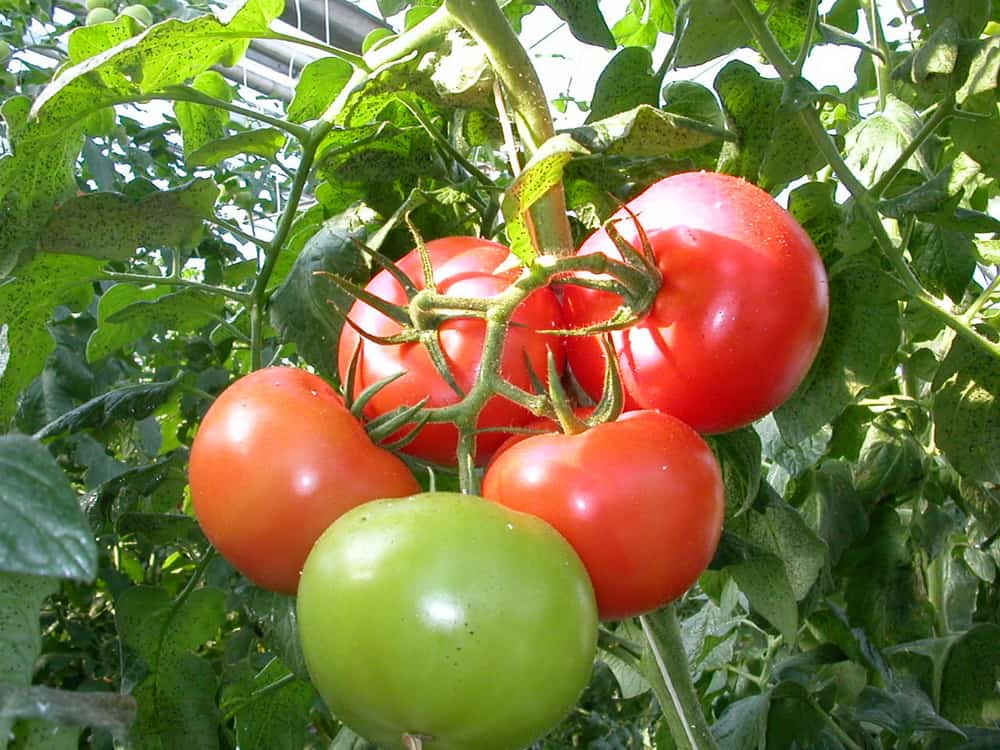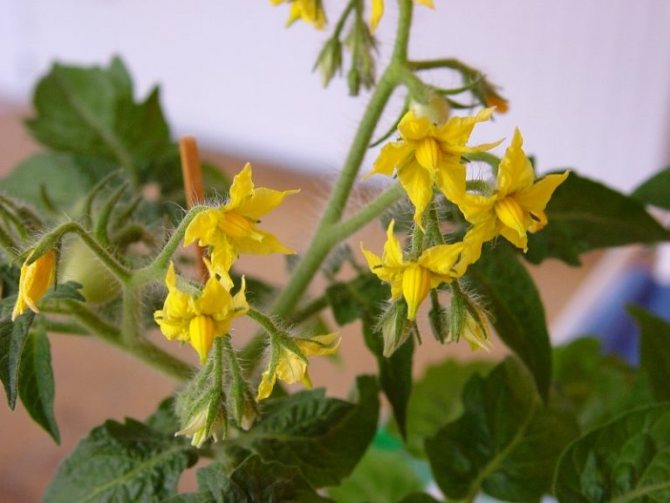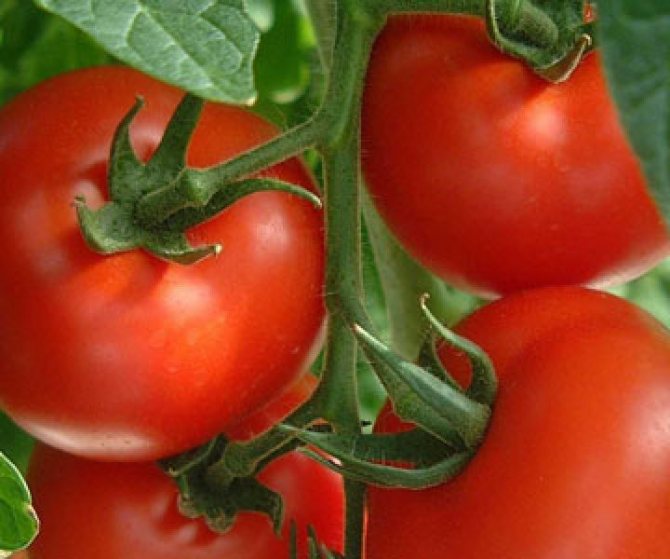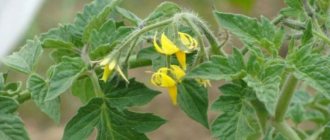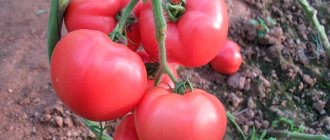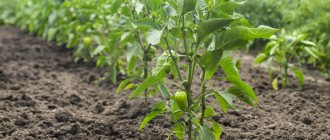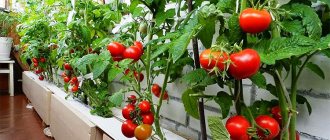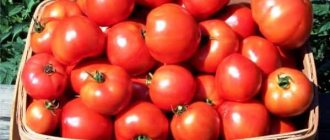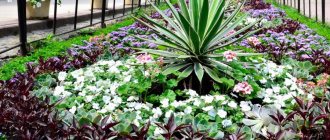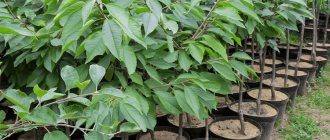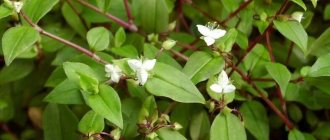Category: Tomatoes
Tomatoes Volgograd reviews are the best. They are distinguished by excellent characteristics and the amount of the harvested crop per season. This type of tomato has been popular for a long time.
- Information on varieties 323 and 595
- Plant formation
- Volgograd pink (video)
- Disembarkation secrets
- Variety reviews
Description of tomatoes
The fruits of the "Volgogradets" tomato can reach a weight of 60 to 95 grams. The tomatoes are smooth, the color of the tomatoes is deep red, and the flesh has a fleshy texture. The shape of the fruit is round, in some cases in mature tomatoes, it can be flattened on the sides. The fruits can be of different sizes. But everyone should have the same shape.
The taste of tomatoes is sweetish. They are very resistant to various influences, including long-term transportation. They have a long shelf life. They can be stored at room temperature for two weeks without spoiling or losing their taste.
Disease resistance
Since the Volgograd tomato was bred quite a long time ago and has practically not changed since then, it has a low resistance to various diseases of the nightshade. It is necessary to work proactively and do everything possible to prevent the disease. Otherwise, the gardener may be left with a meager harvest or even without it.
The Volgogradsky tomato variety is especially often sick:
- Late blight - damage to shoots, leaves or fruits by late blight mushrooms. Their spores are in the soil and do not die even during the most severe winters. The seeds of the Volgogradsky tomato variety can also be infected. For prevention, the bushes and the ground around them are treated with copper sulfate or other specialized preparations. Fruits and plants affected by late blight are immediately removed, but not thrown away. The spores of the fungus remain active for a long time. They need to be burned.
- Alternaria - a bacterial disease, which is provoked by a violation of crop rotation and growing conditions of the Volgogradsky tomato variety. The culture is affected by spotting and, over time, withers along with unripe fruits. For prevention purposes, Bordeaux liquid and copper oxychloride are used. Already affected specimens are sprayed with Ridomil.
- Anthracnose - an infectious disease of the Volgogradsky tomato variety. The pathogen enters the soil with contaminated seeds or fertilizers. The disease manifests itself as a lesion of ripe fruits with speckled rot. You need to get rid of sick bushes in a timely manner, taking them away from the site or burning them.
With the help of modern breeding methods, subspecies have been bred that have great resistance to dangerous diseases. Tomato Volgogradskiy - 323 early pink variety, much more resistant to late blight, but Volgogradskiy tomato - 595 later and not susceptible to anthracnose.
History of appearance
The homeland of Volgoradets tomatoes is Russia. The variety is relatively young, since it appeared in the 21st century. After being entered in the State Register, tomatoes received recommendations for growing in the following regions:
- Central Black Earth Region;
- North Caucasian;
- Ural;
- Far Eastern;
- Nizhnevolzhsky.
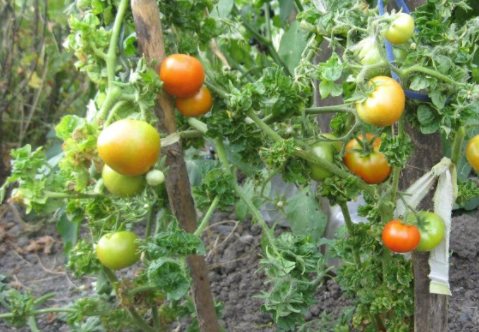
Crop yield
Of course, tomatoes are best consumed raw. However, scientists have proven the fact that after heat treatment, the beneficial properties of tomatoes increase tenfold. The versatility of the "Volgogradets" variety allows them to be used fresh, for example, for the preparation of various snacks and salads. Also, these tomatoes can be preserved whole, salted, rolled with brine, prepared tomato paste, juice and various purees. The choice in this case is great, and depends on the skills and preferences of the person.
If we talk about large-scale farms, then from one hectare of land you can collect about 800 centners of high-quality fruits intended for sale or processing. If we transfer these data to one square meter, then the yield will be about 11 kg, which is especially attractive for summer residents. Thanks to these properties, a large number of fruits can be obtained in a small area with a minimum of effort.
Volgograd tomato: everything you need to know about Vologda tomatoes
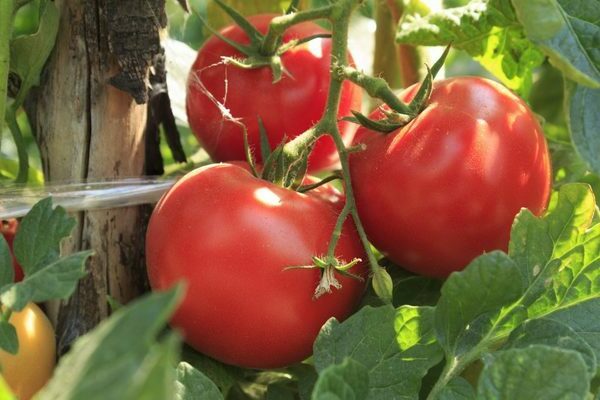

Volgograd tomato: everything you need to know about Vologda tomatoes
Tomatoes bred by Vologda breeders are considered very good by right. There are two well-proven varieties of tomatoes - this is the early-ripening Volgograd tomato 323 and 595, as well as pink. Many gardeners and summer residents love these varieties because they are of very high quality, have a good taste and a thin, but protective peel.
Advantages and disadvantages
Volgoradets tomatoes have high characteristics and a number of excellent commercial qualities:
- bring a big harvest;
- all fruits ripen evenly;
- taste great;
- withstand long-term transportation;
- can retain taste for a long time;
- versatile in preparation;
- tomatoes are immune to many diseases.
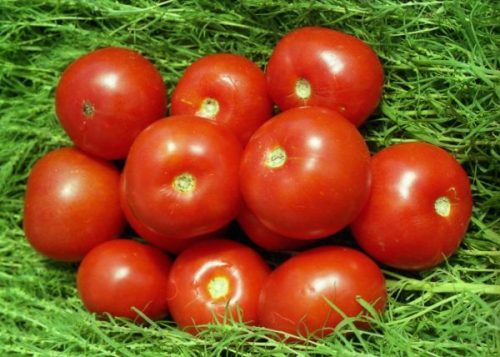

The only drawback can be considered that the diseases inherent in most tomatoes cannot be completely ruled out.
When planting these tomatoes, it is important to consider that the plant is prone to a variety of fungal infections. For example:
- Late blight.
- Top rot.
- Septoria.
- Tobacco mosaic.
- Powdery mildew.
Testimonials
Ekaterina Vasilievna, 38 years old As a preventive protection, you can use a self-prepared two-day infusion of celandine. For this you need to take 10 liters of water and about 1 - 1.5 kg of fresh chopped grass. Spraying must be carried out using a spray bottle. If the first treatment can be carried out no earlier than 14 - 18 days after planting the seedlings on permanent soil, then re-spraying must be carried out after a week break. To protect the root part from possible lesions, it is recommended to put a little onion or garlic husk into the hole when planting the bushes.
Vladimir Mikhailovich, 39 years old If tomatoes are planned for growing in open ground, then for the first 1.5 - 2 weeks it is recommended to cover the area with seedlings with a protective transparent film. This trick will allow the roots to harden and settle better, as well as protect the plants from possible sudden cold snaps, which means that the bush itself will be able to please with a good harvest in the second half of summer.
Features of the variety
Tomato inflorescences are simple and are laid above 7-9 leaves, and the next ones appear after two leaves. Tomatoes do not need high soil moisture, but the ambient humidity should be at least 60%. However, the Volgogradets tomato is a thermophilic plant and requires a special approach to lighting. Tomato bushes are compact, and clusters are formed from 10 pieces. The fruits ripen in the cluster evenly, do not fall to the ground and do not burst.
Recently, climatic anomalies on the territory of Russia are not so rare.Most summer residents complain, then about rainy, or about abnormally hot summer. However, Volgogradets tomatoes are able to withstand any climatic changes and not lose their yield and taste. Due to its unpretentiousness, even the most inexperienced gardener manages to get a rich harvest from this variety.
Disembarkation secrets
- Volgograd tomatoes will grow well and will delight you with a rich harvest. To do this, you need to take care of sandy soil, which is best suited for tomatoes of this variety. However, favorable cultivation is also carried out in the soil, which has a high level of fertility.
- It is important to take care of the predecessors that allow you to make the soil structure as correct as possible. Among them, various categories of legumes, cabbage, cucumbers, eggplants and carrots deserve special attention.
- Humus can be used as fertilizer. After making it, the soil must be dug up. In the spring, you need to fertilize the area with ammonium nitrate.
- Volgograd tomatoes are planted with seedlings that are more than 60 days old. Usually, leaves are formed on the bush by the specified time. The presence of flowers does not allow the plant to set up well and quickly.
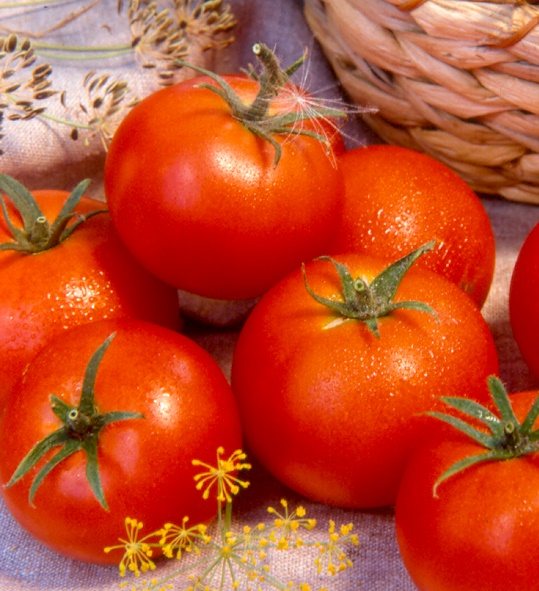

Growing rules
Planting seeds should be done in mid-March, no later than the 20th. While the planting of shoots in the ground is done in mid-May, around the 15th. Plants do not need to be planted close to each other. There should be a distance of about 70 cm between the tomato bushes. The rows of tomatoes should be made wide, at least 60 centimeters. The tomato "Volgogradets" bears its fruits, usually, starting from the middle of July, and finishes bearing fruit at the end of August.
Advice! There should be no more than 5 bushes per 1 square meter. In this case, it will be possible to take care of the plants without undue effort.
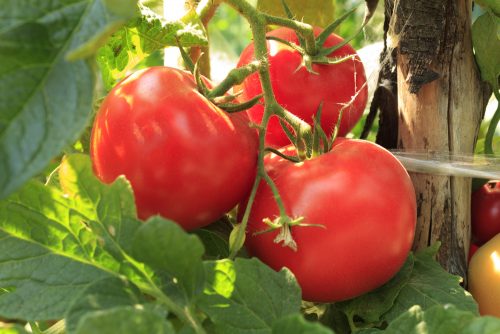

Tomatoes "Volgogradets" must be watered on time, weeded from weeds, flavored with fertilizers and pinned as needed. It is better to weed the plants early in growth and loosen them later. It is also worth spilling tomatoes. This procedure must be performed several times before the bush begins to bear fruit. It is worthwhile to take watering of these plants with all responsibility.
It is necessary to water the tomatoes in moderation, without excessive fanaticism, since excess moisture in the soil can lead to the fact that the fruits will crack and burst. Watering should be done no more than twice a week. However, if the territory is hot and drought, then you can increase the amount of water.
Note! What can you learn about the need for watering with a simple method. To do this, you need to check the soil at a depth of 15 centimeters, if the soil is dry, then it is worth watering the plant, and if the soil is wet, then the watering should be postponed to another time.
It is possible not to pinch the Volgogradskiy tomatoes, as the uniformity of leaves and fruits allows the plants to develop systematically. However, if it is required to increase the number of fruits, then the stepson should be removed to the first inflorescence. If the summer resident decided to reduce the number of fruits, then it is necessary to remove the shoots along the entire trunk of the plant.
In order not to be disappointed in the final result and to collect a decent harvest, it is necessary to process tomatoes with special means in order to prevent the occurrence of various diseases. In addition, timely processing will help avoid the negative effects of insect pests.
Plant formation
To determine the exact timing of sowing seeds, you need to familiarize yourself with the conditions in which the plant can stay. The Volgograd tomato treats heat well enough, so it is recommended to grow it in areas with a warm climate. Provided that the cultivation will take place in a greenhouse, planting of seeds can be carried out in mid-February.If it is supposed to be planted in open ground, but a film will be used, then the seeds are planted on the 20th of March. The indicated dates allow you to get ready-made seedlings for further planting already in early May.
If there are several leaves on the stem, the plant is ready for picking. For this, the plant is transplanted into a large container, where the root system can develop properly. For this, special glasses or boxes are used. Experienced vegetable growers plant tomatoes in peat pots. Their use reduces the risk of damage to the root system during transplantation.
From May 15, the process of transplanting seedlings under the film usually begins. If the climate in the area excludes the possibility of night frosts, then the culture can develop successfully even without a film.

